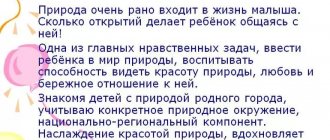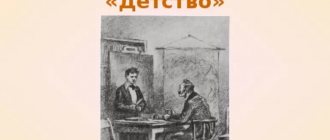City
Cities in medieval Europe were quite small.
Our usual “metropolis” scale does not apply to them at all.
There are discrepancies in the assessment of the population of medieval cities, due to the fact that in the documents of that time, as a rule, not the entire population was indicated, but only adults, and sometimes only adult men.
The city gates were locked at sunset and unlocked at dawn.
City gates in a 15th century miniature. France.
Medieval gates in the English city of Canterbury, in Kent. This symbol of the city attracts numerous tourists to the city.
The 60-foot gate is the largest surviving city gate in England.
Canterbury's West Gate was built from sandstone in 1379 and is still in excellent condition and is an important tourist attraction for the city.
The road still passes through the arches of this gate, so that it still retains its main original function.
Representation of the city in a 15th century miniature.
Taking a walk through a medieval city, you would look in vain on the houses for what seems so necessary to us, what we are so accustomed to - numbers.
Essay on the topic of traveling around the city
(holidays, holidays, holidays) Everyone should have at least one holiday a year, so when you start spending sleepless nights thinking about the sun and sea, when you think longingly about the green countryside, there are no longer any doubt - you are ready for rest. You need to step away from all your everyday problems and get some fresh air. Travel is necessary for all of us, it develops our imagination, gives us movement, and movement, as we all know, is life. One of the purposes of traveling is to go in search of natural beauty. Beautiful places on earth are like magnets that attract tourists year after year. But even more valuable for a traveler is the knowledge that he gains by walking among people of different characters and different ways of life. When the traveler's curiosity fades, he begins to miss his native land, where all things seem familiar and loved to him. Thus, the traveler, in addition to the joy of travel, has the warmest feeling of returning home. Travel has now become an important part of modern life. Millions of people around the world travel to their own countries and to other countries of the world. People travel to visit the natural beauties of the world such as seas, lakes, rivers, mountain ranges, deserts and so on. It is always interesting to discover new things and different ways of living, meeting different people, learning the taste of different foods, exploring different architectural styles, visiting museums and art galleries. It is common knowledge that travel is the key to understanding other cultures and a great opportunity to learn more about the world in which we live. A tourist travels for pleasure and relaxation from the place where he lives. Nowadays, tourism is growing very quickly, mainly because people's lifestyle has changed. People don't want to stay at home anymore. In my opinion, this is because travel has become cheaper. Where once “Grand Tours” were reserved only for rich people, now this service is within everyone's reach. Almost everyone can afford to travel around the world. You can also travel on your own, as budget airlines offer cheap fares. Plus, it's easy, faster, and you'll have more freedom while traveling. The main reason for this is technical superiority. For example, you can easily book a ticket online. You won't encounter long lines and won't waste your time. Thus, it makes our life easier. Another change is money. We now use convenient small plastic cards: you can shop all over the world without any hassle or hassle with your local currency. Not so long ago this was unthinkable, but today it is a reality. So with all the modern technological advancements, it has become easier than ever to travel abroad. Although tourism has many benefits, such as replenishing the local budget of tourist cities, there are also negative effects. Tourism can cause all kinds of damage to the environment, culture and people of a country, especially in places that are not ready for a large number of holidaymakers. First, you have to figure out which routes the tourist destination will take you to. A guidebook is a great place to start. And also in it you can learn about local attractions, and how you should behave and dress. This can save you from unpleasant mistakes. The next step for you is to plan your personal budget when you are on vacation. Even where you have to haggle, you should always pay a fair price for things. Then try to have as little impact on the local environment as possible. Try to leave places exactly as you found them. These rules must be followed strictly in order to save the culture and environment of the places visited and to be polite where we go. Nowadays people can travel in different ways. They can choose a package holiday, when everything is planned without your participation, and a self-tour, when you play impromptu. Traveling on your own gives you the freedom to create your own schedule and do as you please. However, when a trip reveals unexpected joys and challenges, these things are often better tolerated with another person who can relate to your situation and provide moral support. However, the best traveling friend is someone who doesn't panic in times of need and can see the light through a dark moment and laugh! In order to have an enjoyable time abroad, you need to choose the right partner who can share your interests and can be good company. One way to travel independently without intrusive travel agents is to hike. The perfect way to spend a holiday for many people these days. You are absolutely free. You don't face any of the headaches after booking a hotel or searching around the city at midnight for a room to stay. Modern camping hotels are well equipped with hot and cold running water and all necessary amenities. But above all, you'll love the enormous portability. Besides, you are active all the time and you are always closer to nature. Camping provides you with a real change from everyday life. And this is the essence of true relaxation and true pleasure. As for holiday packages, of course, this has many advantages. By choosing a travel package, you will actually get rid of all the activities from booking air tickets, checking hotel availability and booking a room. Everything will be done on your behalf by the tour operator, but you will pay double for this. People choose different places to visit. Some seek sandy beaches, sparkling waters and cloudless skies. Others relax in the spacious and elegant rooms, dine on delicious dishes or unwind in the relaxing sauna. All nature lovers who spend a lot of time with nature prefer lands with endless rivers, bottomless lakes, high mountains. As for me, I would like to visit one of the most beautiful cities - …… (insert your favorite city). I think everyone will agree that traveling broadens your horizons. This is true. Leaving the place where you always live and going to an unfamiliar place will give you an unforgettable experience of your trip. tags: essay on the topic: vacation, travel, vacation, on the Russian language, on Russian literature. ( 1 votes, average: 5.00 out of 5) Loading…
Similar essays:
The amazing journey of Nils Holgersson with wild geese in Sweden FOREIGN LITERARY TALES The amazing journey of Nils Holgersson with wild geese in Sweden This tale by S. Lagerlöf tells the story of a tiny boy who, riding a goose, traveled across Sweden and... Review of the book by Kir Bulychev “Alice's Journey” “I recently finished reading a book. This is science fiction - “Alice's Journey” by Kir Bulychev. This author has a huge series of books about Alisa Selezneva, she is the main character in each of them... Essay on the topic: Spring birds Spring worries of birds are building nests and raising chicks. From the very moment the buds bloom on the trees, the birds are already there. Many of them return in the spring from... TRAVEL TO THE MOUNTAINS My parents and I have long preferred a “wild” vacation to a civilized one. And today I would never trade a tarpaulin tent and a pot over a fire for a boarding house with amenities and multiple meals... An interesting journey An interesting journey The year before last I had to take part in one “interesting” journey. The journey took only one day, but how many impressions were left! And this journey, rather an unpleasant adventure, began... CONDEMNATION AND ridicule of human vices (based on the novel by J. Swift “Gulliver’s Travels”) CONDEMNATION AND ridicule of human vices (based on the novel by J. Swift “Gulliver’s Travels”) 1st option In the novel by Jonathan Swift “ Gulliver's Travels" reflected the writer's views on man, his place in the world, attitude... Essay on the topic "If I were Robinson" Last summer will be remembered for a long time. At least because I felt like I was in the role of Robinson Crusoe. But first things first. My parents urgently needed to leave for a few days... Essay on the topic: The role of the computer in our lives In the modern world, many, many things depend on the computer. And this is kind of sad, of course it’s good that the world does not stand still and Computers help us in many ways, but... The Expedition of Humphry Clinker ENGLISH LITERATURE Tobias George Smollett The Expedition of Humphry Clinker Novel ( 1771) “The Travels of Humphrey Clinker” is the last work of an English writer: the novel was published... The Journey of Amateurs Bulat Shalvovich Okudzhava The Journey of Amateurs From the notes of retired lieutenant Amiran Amilakhvari Roman (1976-1978) A novel in which the action takes place in 1845-1855, begins with the return of Prince Sergei Myatlev and the narrator Amiran... Essay on the topic “The Treasure that Man Needs” The topic of this essay at first seemed like a mystery to me. What kind of treasure is this that a person can need so much? Money or material goods? Of course, a person needs them and warms him... Russia of the era of Catherine II (“Travel from St. Petersburg to Moscow” by A. N. Radishchev) - A. N. Radishchev “Travel from St. Petersburg to Moscow” by A. N. Radishchev written in popular XVIII century travelogue style. In this work, the author analyzes the harsh Russian reality of the era of Catherine II, raises the most... Essay on the topic: “The tragic fate of Gerasim.” (An essay based on the story “Mumu” by I. Turgenev) Gerasim was a peasant who belonged to an old Byryna woman who lived in Moscow. Gerasim lived in a village and was twelve inches tall. He was deaf and mute and uncommunicative. Gerasim worked for four people, was simple, strong... Sentimental journey Viktor Borisovich Shklovsky Sentimental journey Memories. 1917-1922. Petersburg – Galicia – Persia. Saratov – Kyiv – St. Petersburg. Dnepr - St. Petersburg - Berlin (1923) Before the revolution, the author worked as an instructor of a reserve armored... Essay on the topic: Who to be I really want to become a photographer. When I started taking photos with my phone, I realized that I really liked it. I photographed people, animals, nature and even food! It was then... Essay on the topic “Spirituality in the modern world” Now we live in complete evil, cruelty and instability. The people have forgotten such concepts as humanity, spirituality, kindness, sincerity. It seems to us that a spiritually rich person is one who reads a lot of books and is interested in... Essay on the topic: Houseplants Nothing enlivens and decorates a room like Houseplants. Discs, books, posters - all this seems dead in comparison with the greenish tall leaves in porcelain flowerpots, which are ideal... Essay on the topic “What is special about my school?” School... This is an unusual place! The building where everyone spends nine or eleven years of their life. This is the place where we first begin to read, write, count, then express our thoughts and develop…. Essay on the topic “One day of life on Mars” The Earth is my home. Perhaps one of the most beautiful shelters of this Universe went to me, a human being. Today I feel this especially subtly, enjoying my stay in the autumn park, which is like a saving grace... An essay on the topic of Romanticism and irony in “Belkin’s Tales” by A. S. Pushkin “Belkin’s Tales” are one of the best examples of realistic prose of the 19th century. They are constructed in a rather unusual way: small pictures from life have peculiar romantic plots that can be called “eternal.” In fact,... Essay on the topic “Education, culture and civilization” A little over 16 years ago, humanity entered the new millennium. Over the centuries-old history of development, major cultural, scientific and technical achievements have been achieved. But at the same time, we face more and more... Journey to the West CHINESE LITERATURE. Author of retellings I. S. Smirnov Wu Cheng'en Journey to the West (Xi Yu Ji) - Novel (second half of the 16th century) Xuanzang was ordained as a monk from an early age, and owned... Essay-reflection on the topic: Our destiny is in our hands Everyone's life a person is a choice that he must make himself. It just so happens that every day we have to make decisions. And it depends on what decision we make that... Voyage to the End of the Night FRENCH LITERATURE Louis Ferdinand Celine Voyage to the End of the Night (Voyage au bout de la nuit) Novel (1932) Young Frenchman, medical student Ferdinand Bardamu, under the influence of propaganda, signs up as a volunteer... Essay on the topic: My pet I was born into a family that is very partial to animals: my grandmother worked as a veterinarian all her life, my grandfather was and is still involved in arranging shelters for animals that were left without... An essay on the topic “What is better to follow the well-trodden path or look for your own?” The world does not stand still. Every person in this Universe strives for a better life, growth, improvement. Now humanity already has many examples for achieving success, and are they effective for... An essay on the topic “Why should you take care of a book?” Since the creation of the first books, people have treated them very carefully. Books were kept in the best rooms and the driest places were reserved for them. Books were decorated with gold and precious stones because... Essay on the topic: Gogol in Moscow Many great Russian writers were born and raised in Moscow: Pushkin and Lermontov, Griboyedov and Dostoevsky - the list of names can be continued for a long time. For others, Moscow became a favorite city already in adulthood... Essay on the topic “Loneliness” Loneliness is boredom, it is a person’s life alone, when a person lives and does not touch other people. There are a lot of such people. But still, why did a person become lonely? What reasons influenced... A Sentimental Journey through France and Italy ENGLISH LITERATURE Laurens Stern (Laurens Steme) A Sentimental Journey through France and Italy (A Sentimental Journey through France and Italy) Novel (1768) Having decided to travel through France and Italy, an Englishman with... Essay on theme “Travel”
Numbering
The numbering of houses and signs with street names, this entire system that we understand today, was established only in the 18th century.
Before that, the location of a house on the street could be determined by signs - drawn or carved on the wall, painted on a hanging board, but in the Middle Ages they were not available on every house, and we do not know exactly how such images were obtained.
Most researchers believe that owners installed and changed signs completely freely; however, rare evidence shows that the lord could intervene here and allow or prohibit the change of sign initiated by the new owner to please his own taste or to reflect his activities.
But the change could also cause confusion, because the house would not be recognizable under the new sign or because such an image already existed on this street.
Despite attempts at control by the lords and an increase in the number of identifying images towards the end of the Middle Ages, such a system did not provide complete coverage of houses throughout the city. The streets became more picturesque, but this did not make them more convenient, since the same signs were found on them.
An exact address is both progress and loss of freedom, because judges, tax collectors and other government officials can recognize and find you. Even in the 18th century, street name signs were so often torn down at night that they decided to carve the names in stone.
Music is coming from the direction of the square. That's right, jugglers, minstrels, and nativity scene performers always hung around the cities, trying to make a living with their talents.
Layout
Many cities had approximately the same layout. In the center is the main square, where the most important buildings were located: the central cathedral, the town hall or meeting hall, the house (or castle) of the ruler.
From the square, streets spread out in radii. They were not straight, they looped, intersected, forming small squares; they were connected by alleys and passages. All this formed a real labyrinth in which it is not difficult for a visitor to get lost.
City streets... The sun rarely penetrates here.
The barrier to it is primarily the narrowness of the streets, as well as the upper floors protruding quite far, sometimes by several feet, above the lower floors.
Many houses, in addition, are equipped with retractable floors. The insufficient width of the streets and these protruding floors leave little space for the inhabitants.
The city, not being able to expand in width, successfully grows upward. The lower floors of the houses house shops, sheds, and cellars.
But until recently, despite its impressive walls, the city was a huge village with small thatched houses.
Essay Moscow is my favorite city
Moscow was founded in 1147, is located almost in the center of Europe and is the capital of Russia. Moscow, as a metropolis, is very densely populated. Many tourists around the world come to this city to see its sights, but also, of course, to look at the famous Moscow Metro, which contains a huge number of vocals, as well as to visit museums, historical monuments and churches.
(you can insert a photo from a historical site)
Residents of the city of Moscow are very friendly and kind to everyone, some tourists are amazed by their generosity and hospitality. Moscow, like any other city, has its own traditions and customs, but they are special and unique. People dress up in bright costumes with lace and ribbons. While in Moscow, do not forget about the famous Kremlin and Arbat Street, popular among tourists, about Gorky Park, about the Yuri Nikulin Circus, about the Alexander Garden. Moscow, compared to other megacities, is clean and tidy, flowers and trees grow on the streets, parks have been built and landscaped throughout the city.
(You can insert a photo of the Kremlin, Arbat Street, Gorky Park, Yuri Nikulin Circus, Alexander Garden)
The Moscow River is huge and it makes you impressed. You can swim along it, but only by ferry or river bus, or look at the ships sailing in different directions. Moscow is beautiful with the Tretyakov Gallery. All the paintings have been perfectly preserved to this day and still make us wonder.
(You can insert a photo of the Moscow River)
For a long time, princes ruled in Rus'; the city of Moscow has long been considered the center of the prince’s possessions. Some monuments were destroyed during the war and can no longer be restored.
When you visit Moscow, it’s as if you’re satiated, filled with strength, and want to move on with your life. Moscow gives a piece of its rhythm, it is beautiful. In such a city lives both old and new, both rich and valuable. This is why I love Moscow!
Village and city
And for a long time the city dweller did not part with his rural habits. It used to be that pigs and all kinds of livestock were walking around all the streets.
The streets themselves were far from clean. The pavement first appeared only in front of the houses of noble and wealthy citizens.
Entry of the English lord into the city
When people went out into the street, they wore wooden shoes placed directly on their shoes. These “shoes” played the role of modern galoshes. Strictly speaking, these additional shoes were not shoes at all, although they were called that: they were simply wooden soles attached with straps to an ordinary shoe.
It looked like this
The street dirt also increased because, despite the strict regulations and requirements of the city council, the city residents could not give up their habits: everything unnecessary, everything unnecessary, without a twinge of conscience, they threw out into the street.
This is how the city is described by Hans Sachs (1530) in his work “Eulogy to the City of Nuremberg”
“There are exactly six gates, and two more small entrances; A dozen markets for the people. The counters are never empty: There is more than enough grain, cabbage, Fruits and lard and wine; Every product has its own price, Bargaining is plentiful - wherever you look! There are also thirteen public baths and eight temples, where we offer praise to God. The river runs through the city, Turns seven dozen millstones... Here they work under every roof; Others are busy with trade, and their business is going briskly! And the majority earn their income from crafts and live happily ever after. And how many crafts are there in the city - I started counting, but gave up.”
Self-government in cities
Life here was quite democratic: the council was elected by the townspeople themselves, and he, in turn, elected the mayor.
Medieval motto: “The city makes you free!” was legally embodied in practice: a person only had to live in it for one year and one day to become free, even if he had previously been in personal dependence.
Thanks to the cities, a class of people called the bourgeois appeared. The reason for the appearance of such people was the way of thinking of a city dweller, which was radically different from the peasant worldview.
Retail space
The city of Nuremberg on a medieval miniature
Closer to the center of the city there were rich houses, further away there were houses and workshops of artisans, and just on the outskirts there were slums. Not far from the city gates there were merchant farmsteads where passing merchants stopped. There were also warehouses for goods.
The custom of displaying their goods outside the doors of shops, on the street itself, was very common among merchants of the medieval city. For this purpose, many shops have awnings over the part of the street adjacent to the shop.
In a large city there could be several shopping areas. Some of them were “specialized” places for trading certain goods and bore appropriate names (Rybnaya, Zheleznaya, Zernovaya, Goncharnaya, etc.).
There was also trade on the craft streets. The artisan's house was both his workshop and the shop where goods were sold.
Townspeople in a 13th century miniature
Travel to a medieval city essay
Essay on history “Journey through a medieval city” or “Medieval city”
I entered this French city in the morning through a gate in the fortress wall. The guards had just opened the city gates, which had been locked at night. Therefore, many peasants entered the city with me, carrying goods to the fair on carts.
I found myself in a maze of narrow streets. Some of them could not even be passed by a cart. In addition, the second floors of the houses protruded strongly above the first. I had to make my way in the semi-darkness, holding on to the walls. Women were talking loudly from the windows above my head. Once, slop was splashed from above directly onto the street. I barely had time to jump back.
The streets were very dirty. On one of them a fat pig was lying in a puddle. In dead ends there were often garbage dumps where rats walked calmly. Local residents told me that just a year ago a plague appeared in the city. But fortunately, a devastating epidemic did not happen.
I reached the street of artisans. Tanners, blacksmiths, carpenters, weavers, tailors, shoemakers, engravers, gold and silversmiths worked here. The doors of each workshop were open and above the entrance hung the emblem of the workshop, that is, the association of artisans. From local residents I also learned that there is a spinning factory in the city, where many people work.
I walked out onto the central square, paved with cobblestones. I admired the town hall tower, in the building of which the mayor and municipal authorities meet. Next door to it is the main city cathedral. It is built in the Gothic style. Its narrow towers with sharp spiers seem to be trying to reach the heavens.
A hill rose above the city, on which I saw a castle surrounded by a wall and a moat. It was the residence of the Duke of Alençon, a feudal lord and owner of all the surrounding lands. The inhabitants of the city did not work on his estate, but were still completely dependent on his wrath and favors. https://ycilka.net/tvir.php?id=133
I'm in a medieval city
Probably every person wants to stroll through a medieval city. It’s a pity that now only modern houses are being built, so you can only get to a medieval town or castle on a tour. They were turned into museums in which you can no longer feel the real atmosphere of that time.
How would you like to walk through the narrow streets, buy groceries from the lively traders at the bazaar, and go to a ball in the evening! Or better yet, ride in a carriage like Cinderella! You just don’t want your luxurious outfit to turn into rags after midnight, or your carriage to turn into a pumpkin.
In a medieval city, every street breathes magic, houses keep legends, and cats tell each other fairy tales on the roofs at night. And in the Middle Ages there were very beautiful costumes. Girls wore fluffy dresses, and men wore camisoles embroidered with precious stones. And modern clothes would seem poor even to a peasant.
Streets
In the Middle Ages the street was used as a butcher's market. The slaughter of livestock and the sale of meat by the carcass created a number of health hazards, which prompted them to introduce a decree (1301) that prohibited butchers from selling carcasses or cuts of meat.
Which was already on sale from their stalls and exposed to sunlight for a full day (unless of course the meat was thoroughly cleaned and salted). Not much has changed at all...
Workshops
A characteristic feature of medieval craft in Europe was its guild organization - the unification of artisans of a certain profession within a given city into special unions - guilds. Guilds appeared almost simultaneously with the emergence of cities.
In Italy they were found already in the 10th century, in France, England, and Germany - from the 11th-12th centuries. Each workshop had special “secrets of craftsmanship” that were jealously kept.
For revealing these secrets to an outsider (not a student or journeyman), the master could be expelled from the workshop or even expelled from the city.
artisans and workers of various professions 15th century
Traders. Possibly calculating profits /thumbnail 15th century/
Sellers-buyers. Apparently some kind of deal is going on, miniature 14th century.
The tax collection system in those days was also significantly different from the modern one. There was no such thing as “income tax.”
Medieval European cities - education
Scientists identify two factors that contributed to their appearance. The first is the overproduction of agricultural products. The fact is that peasant farms produced so much food that they could easily feed both feudal lords and the clergy, as well as other people who did not need to work on the land.
The second factor is the high level of demand for items produced by artisans, and cities were the centers of development of crafts.
Thus, cities arose where it was convenient not only to produce handicraft products, but also to sell them. Often the formation of medieval cities in Europe took place on the ruins of Roman settlements, because the Romans built them according to strict rules. One of the most striking examples of this is the French city of Arles.
Rice. 1. Arles.
City walls also began to be erected near a river, around a sprawling feudal estate, at the intersection of trade routes, or near a well-fortified monastery.
TOP 1 article
who are reading along with this
Medieval village and its inhabitants
Tax
No one was interested in a person’s real income and was not officially taken into account in any way. Taxes were taken from property (actually existing at the moment) and taxes were imposed on specific actions.
Thus, a tax was levied for travel across the bridge, for the import of goods into the city, for trading in the market square, for the right to hang a sign above one’s workshop, etc. and so on.
When determining property taxes, the tax collector conducted... well, not a search, of course, but close to that: a detailed inspection of the property and drawing up an inventory of it.
For non-payment of taxes, part of a citizen's property could be confiscated and sold at auction.
Payment of rent. Drawing from a 15th century miniature.
And this is the port city of Bruges in a 15th century image.
The city of Paris in a 15th century image.
Two main problems of a medieval city
The first problem was sewage, because there was no sewage system for a very long time, everything was thrown out and simply poured into the street, which became the cause of the spread of epidemics. In response, people appeared in the city who cleaned toilets and transported their contents outside the city walls.
And the second problem is fires. Since the houses were made of wood, they caught fire easily, and the density of buildings meant that entire neighborhoods could burn out because of one careless person.
Rice. 3. Fire in a medieval city.
In preparing a report on city fires, one cannot help but mention that the political struggle for a seat on the city council was often accompanied by arson. To stop them, people caught setting fires were burned alive.






